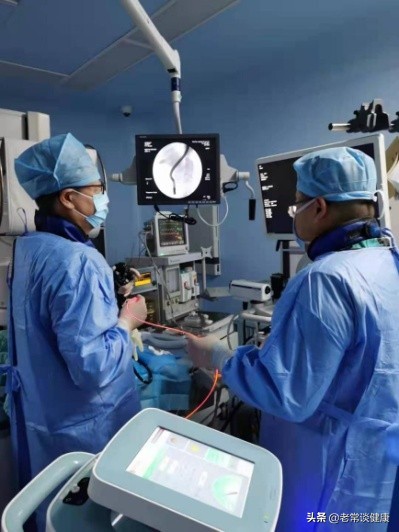A thin optical fiber successfully landed on the team of Professor Wang Meng of the Department of Hepatobiliary Surgery of the First Hospital of Jilin University, and Professor Wang Meng used it for the first time to ignite the light of Grandma Wang's life, and once again had a good look at the world.
After the National Day, 72-year-old Grandma Wang in Jilin Province had epigastric pain for three days, no nausea and vomiting, accompanied by fever. He was treated in a local hospital for symptomatic treatment of pain, and there was no significant relief of symptoms. The patient admired Professor Wang Meng, so he was referred to the First Hospital of Jilin University and was admitted to the department of hepatobiliary and pancreatic surgery with "obstructive jaundice". After being admitted to the hospital, Professor Wang Meng conducted five tumor markers and imaging tests on the patients, including physical examination, liver function test, blood amylase, urine amylase, and digestive tract, and diagnosed him as "end-of-bile duct tumor and obstructive jaundice".
Bile drainage is performed in consultation with MDT multidisciplinary experts, taking into account the patient's older age and previous medical history (diabetes mellitus, 10 years of coronary heart disease), endoscopic minimally invasive surgery. Professor Wang Meng's team from the Department of Hepatobiliary and Pancreatic Surgery successfully implemented ERCP (endoscopic retrograde cholangiopancreatography) + bile duct epithelial cell tumor biopsy + bile duct nasobiliary insertion and drainage. Postoperative jaundice was significantly improved (bilirubin decreased from 125 mg/dL to 23 mg/dL). Cell biopsy confirms "adenocarcinoma cells".
The biggest challenge is how to carry out effective treatment without opening the abdomen?
Due to the advanced age of the patient and the high risk of surgery, the family did not agree to the surgical operation, and after discussion by Professor Wang Meng's team, it was decided to perform "endoscopic ERCP-mediated photodynamic therapy" for Grandma Wang; Professor Wang Meng repeatedly communicated the treatment plan with Grandma Wang and her family, and introduced the principle of photodynamic therapy (PDT) technology in detail, so that she fully understood the advantages of treatment:
Minimally invasive precision: With the help of optical fibers, endoscopes or other interventional techniques, the trauma and pain caused by open chest and open abdomen are avoided.
Good targeting: the main target of photodynamic therapy is the diseased tissue in the light area, and the specific tissue around the lesion is slightly damaged;
At the same time, it also has many advantages such as eliminating hidden lesions and repeatable treatment, and Grandma Wang and her family are aware of and agree to the treatment plan.

Professor Wang Meng's team performed PDT surgery
In close cooperation with Jiaxin Li, Nurse Wang Xi and Professor Wang Hongdan, Professor Wang Meng's team conducted endoscopic ERCP-mediated photodynamic surgery. The whole surgical process was very smooth, the photodynamic treatment took only 30 minutes, and the patient was discharged from the hospital without obvious complications such as fever, abdominal pain and cholangitis after surgery.
Endoscopic ERCP combined with photodynamic treatment of cholangiocarcinoma has been carried out smoothly in our hospital, bringing good news to patients with cholangiocarcinoma who cannot tolerate or lose the opportunity for radical surgery. The national multi-center clinical research project ERCP combined with photodynamic treatment of cholangiocarcinoma can save patients costs, prolong survival and improve quality of life.